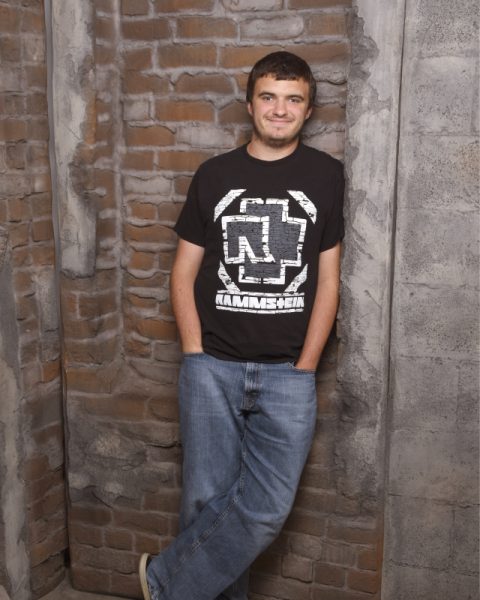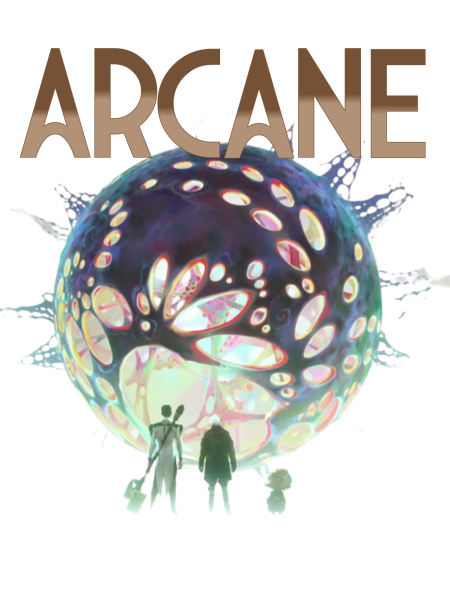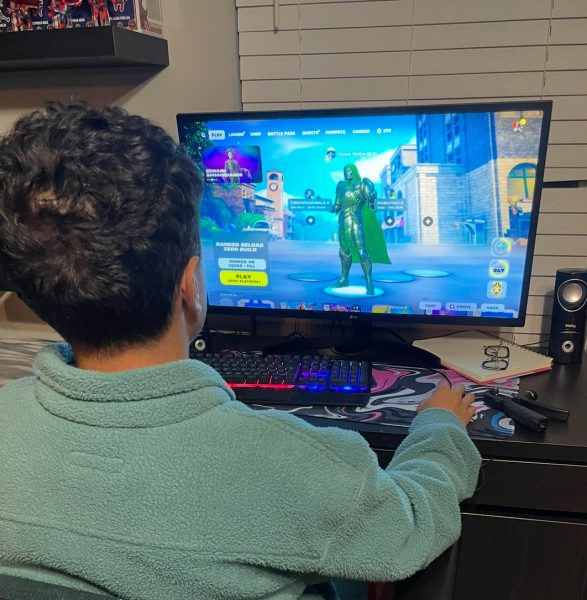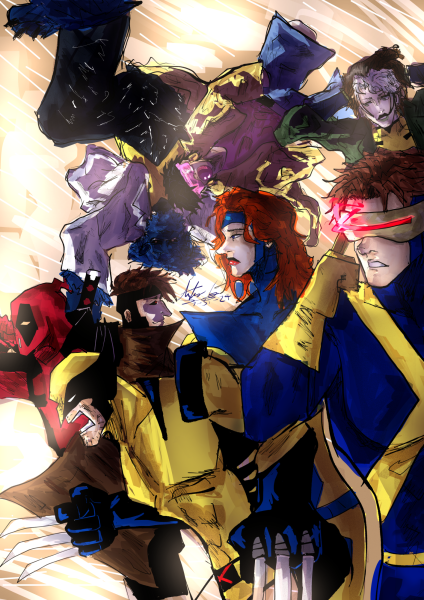TV Review: ‘Stranger Things’
Editor’s Note: Warning! Spoilers ahead!
Ataris and conspiracy theories, Dungeons and Dragons and government laboratories, and small towns and psychics. Welcome to the surreal, creepy and haunting world of the Duffer Brothers’ 2016 masterpiece “Stranger Things.”
Set in 1983, the first season of “Stranger Things” tells a multitude of stories all connected by three things – a young boy named Will’s disappearance, a mysterious, psychic girl named Eleven, and the government laboratory on the outskirts of their town, Hawkins, Indiana.
The main story focuses on Will’s friends – Mike, Lucas and Dustin, as their lives are changed following the disappearance, Eleven entering their lives after she had escaped from the laboratory, and the investigation into Will’s disappearance. After Eleven enters their lives, she becomes a lead in their investigation and reveals that the lab outside of Hawkins had something to do with it.
As the boys try to solve Will’s disappearance, Will’s mother, Joyce, experiences some strange happenings of her own, in the form of Will communicating to her via the lights in her house and a set of monstrous hands trying to push through the walls. These happenings culminate in the monster, known as the Demogorgon, bursting through the walls during a communication with Will, Will actually appearing in the walls and calling for help, and with Will’s funeral after his body was found in a lake. Or was it?
Will’s body was found by the Hawkins chief of police, Jim Hopper, who at first thinks Joyce is crazy due to her actions. After he does a little digging, Chief Hopper finds Will’s body at the morgue and cuts it open, revealing it to be fake. Hopper then teams up with Joyce as they investigate the government lab, search for Will, and unearth the many secrets the lab had been hiding.
While all of this is happening, Mike’s older sister, Nancy, has her friend, Barb, go missing after a party hosted by her boyfriend, Steve. Turns out, Will’s older brother, Jonathan, had been snapping pictures of the party and caught something in one of the photographs – the monster that had burst through the walls at Joyce’s house, which turns out to be the same monster that Nancy had seen in the forest the day after the party – the Demogorgon. Nancy and Jonathan team up after this, much to Steve’s chagrin, and decide to track down the Demogorgon themselves.
Throughout all of this, Eleven’s story is sprinkled in at various points as flashbacks to her life at the government lab. Eleven was forced to use her powers for various experiments, be secluded for hours on end as punishment, and be dumped into a sensory deprivation tank where she first came into contact with the Demogorgon and cracked open the thing that got this whole mess started – the Gate.
The Gate is a festering, breathing portal to the Demogorgon’s home world – the Upside Down. This disgusting, surreal dimension is the polar opposite of our world where everything is squalid, run-down and overrun with living, breathing vines. This is where Will and Barb are taken by the Demogorgon and while Barb became the Demogorgon’s dinner, Will is kept prisoner here and calls out for help via Eleven and the lights strung up in Joyce’s house.
All of these stories eventually culminate in the first season’s explosive, surreal and fantastic climax. The boys, Eleven, Joyce and Hopper break into the boys’ middle school where Eleven makes contact with Will and Joyce and Hopper go on a rescue mission to the Upside Down to save him. Meanwhile, Nancy and Jonathan stay behind at Joyce’s house where they lure in the Demogorgon and do battle with it in a fast-paced, tooth-and-nail battle that concludes with them attempting to burn it in a gasoline fire, but it escapes and heads back to the middle school, right as the laboratory’s boss is about to take Eleven back to the lab. This entire sequence concludes with Eleven vaporizing the Demogorgon and the boys escaping the school, but with one less person, Eleven. She is believed to have died killing the Demogorgon.
In the Upside Down, Joyce and Hopper search for Will in the vast squalor and desolation and eventually find him, but in very rough shape. Will has a vine attached to his mouth and is barely even alive, only hanging on by the skin of his teeth. Joyce manages to resuscitate Will in the nick of time and all three escape the Upside Down and go back to their normal lives, but with one exception: Will is having visions of the Upside Down and coughs up a gelatinous, slimy slug into his sink, thus concluding Season One and setting up Season Two.
Season Two picks up a year later, in 1984, and Will isn’t doing so good. He is suffering from visions of the Upside Down, in particular, the big monster of Season Two – the Mind Flayer, a Lovecraftian, tentacled horror that has big plans for planet Earth. The Mind Flayer eventually possesses Will and forces him to act as a spy for its cause. What is the Mind Flayer’s cause? Invade Earth and make it an exact duplicate of the Upside Down, and the Mind Flayer has already started its invasion long before it possesses Will. How? Tunnels beneath the town where its foot soldiers are born – Demo-Dogs, adolescent forms of Season One’s Demogorgon.
One of these creatures, in its larval form, winds up in Dustin’s trash can and he adopts it, not knowing it’s a Demo-Dog, and gives it the name of D’artagnan, Dart for short. Dart quickly molts and grows in size and shape during its stay on Earth and escapes back to the tunnels with its fellow Demo-Dogs.
As all of this goes down, Eleven is revealed to have survived killing the Demogorgon and is currently living with Hopper as his adopted daughter. Hopper keeps her under a microscope at all times and is incredibly over-protective of Eleven, which causes her to run away from home to Chicago where she searches for another psychic, Kali, A.K.A. Eight. On a side note, this is the only weak point of Season Two. Kali and Eleven’s story is stand-alone and has no bearing on the plot, but it is still interesting. Too bad it wasn’t developed enough.
Finally, Jonathan and Nancy are still at it, this time with Nancy and Jonathan teaming up with a conspiracy theorist in order to expose the lab for covering up Barb’s death and many other deaths linked to the lab. While they are gone, Steve, Nancy’s boyfriend, teams up with the kids as they defend their town from the Upside Down and the Mind Flayer.
Like Season One, these stories conclude with an incredible climax, but this time, I won’t be spoiling anything. You’ll just have to see it yourself.
Though “Stranger Things” has an incredibly sprawling narrative that twists and turns with each new episode, it is incredibly consistent with two aspects that make it different than any other show on TV – atmosphere and ambiguity. The show is set in the 1980s and does an impeccable job of keeping that setting and atmosphere consistent and correct. You get Ataris, microfilm machines at the library, giant walkie-talkies, and Reagan/Bush ’84 and Mondale/Ferraro ’84 signs. Not one detail is off at all and it keeps that 1980s vibe all throughout.
In addition to the 1980s vibe, “Stranger Things” pulls off another important aspect of atmosphere – suspense and mystery. It does this so well, in fact, that the two seasons are comparable to two of the biggest, classic authors of horror – Stephen King and H.P. Lovecraft. Season One feels like a combination of the scares of “It” plus the ambiguity of another classic TV series, “Twin Peaks.” Season Two, however, shifts away from all of this in favor of the vast, cosmic horror vibe of H.P. Lovecraft, but it still keeps the ambiguity strong.
Speaking of ambiguity, this is the show’s strongest aspect, other than its characters. Every episode has a new twist to the narrative that only adds ambiguity to the entire story. This is what makes “Stranger Things” so suspenseful and creepy throughout and even with each season’s climax, a small amount of ambiguity is retained, allowing a new story to begin and the journey to continue.
Finally, “Stranger Things” does something that is often overlooked in today’s TV shows – strong characterization. Though “Stranger Things” features an ensemble cast, a cast who gets equal importance and screen time, the show always provides characterization via its narrative. Characterization is just as important to the show as ambiguity and atmosphere and the way “Stranger Things” handles characterization is amazing and incredibly well-done.
How does it pull this off? Characterization is woven into the narrative. Every moment in the show advances the story and fleshes out the characters to some degree. The characters feel like real people by the end of Season One, and even more fleshing out is done as the show progresses through Season Two.
In short, “Stranger Things” was a breakout hit in the trainwreck known as 2016 and still continues to make waves today. It’s funny, scary, intriguing, mysterious and tear jerking. There are only 17 episodes, so if you have the time, just sit down and binge the show on Netflix over the long holiday break coming up. With Season Three recently being greenlit, get started as soon as you can on this impeccable masterpiece of television.
Finally, this is Jake saying, “Have a Merry Strange Christmas!”

Morgan "Jake" Lankford
Staff/Reporter, The Pony Express.
Morgan "Jake" Lankford was a staff reporter for The Pony Express.





bernardsanchez • Jan 11, 2018 at 4:18 AM
Very nicely illustrated blog, easy to grasp/understand Brontosaurus Sweatshirt For Men